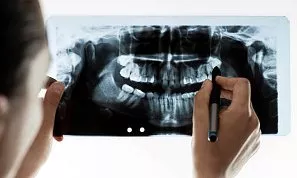
CLEIDOCRANIAL DYSPLASIA
Cleidocranial Dysplasia is a genetically inherited medical ailment. The skeletal system becomes affected by a mutated gene that can be passed by either parent or it can occur from the spontaneous mutation of a gene.
If your child needs surgery or casting, our Fracture Care Clinic opens every day and you do not need an appointment. Surgery rooms get scheduled every morning, so your child receives the care and attention they need right away.
Cleidocranial Dysplasia
 Cleidocranial Dysplasia, sometimes called Osteodental Dysplasia, Marie-Sainton Disease, or Cleidocranial Dysostosis is a genetically inherited medical ailment. The skeletal system becomes affected by the uncommon condition known as cleidocranial dysplasia. Although each patient is afflicted to a different extent, both the development of the bones and the teeth are impacted. In some newborns, the signs of this illness appear so slight that they go undetected and undiagnosed. Furthermore, some infants with Cleidocranial Dysplasia may exhibit symptoms as early as infancy, while other people may not exhibit any symptoms at all. On the other hand, some infants could reveal such severe symptoms that the delivery doctor will diagnose the condition at birth just by looking at the child and confirming aberrant bone formation.
Cleidocranial Dysplasia, sometimes called Osteodental Dysplasia, Marie-Sainton Disease, or Cleidocranial Dysostosis is a genetically inherited medical ailment. The skeletal system becomes affected by the uncommon condition known as cleidocranial dysplasia. Although each patient is afflicted to a different extent, both the development of the bones and the teeth are impacted. In some newborns, the signs of this illness appear so slight that they go undetected and undiagnosed. Furthermore, some infants with Cleidocranial Dysplasia may exhibit symptoms as early as infancy, while other people may not exhibit any symptoms at all. On the other hand, some infants could reveal such severe symptoms that the delivery doctor will diagnose the condition at birth just by looking at the child and confirming aberrant bone formation.
Genetics
A mutation in the RUNX2 gene alone can cause the genetic disease cleidocranial dysplasia. Statistics show that one in a million persons globally suffer from this extremely unusual illness. Actually, medical literature around the globe reports only a little over a thousand cases reported.
Risk factors
Autosomal dominant inheritance is the genetic type that causes cleidocranial dysplasia. This emphasizes the idea that all it takes for a medical problem to develop in a newborn is for one mutated gene to exist in one parent. Before trying for a baby, those who already have the disorder must get genetic counseling. Unfortunately, the mother will give birth to the infant with the disorder if both parents carry the gene mutation. Comparatively, only one parent who carries the mutation will also have a chance of becoming pregnant and producing a child who will either not pass on the mutation or only acquire a moderate form of the condition.
The severity of the condition the unborn child will have to deal with and the likelihood that it will become inherited may both be assessed by genetic testing during the pregnancy. Also susceptible to the spontaneous occurrence is the gene mutation that causes Cleidocranial Dysplasia. This refers to the possibility that the defective gene is not present in either parent, but rather that the child’s gene may have changed for an unknown cause. There is no way to avoid spontaneous genetic mutations. However, our doctors will suggest that the mother take general precautions during pregnancy to avoid situations that can lead to genetic mutations.
Most often, Cleidocranial dysplasia is associated with genetic mutations in the RUNX2 gene, although nearly 30% of patients suffering from this condition do not carry this genetic mutation. In these cases, the cause of the failure is unknown. In fact, many of these individuals have no family history of the disorder.
QUESTIONS AND ANSWERS
What common features or symptoms exist for Cleidocranial Dysplasia in children?
Cleidocranial Dysplasia can present with a range of symptoms, but some of the most common features include delayed closure of the soft spots (fontanelles) on the baby’s skull, delayed eruption of both primary and permanent teeth, and underdeveloped or missing collarbones (clavicles). Children with CCD may also have a rounded, prominent forehead and other facial abnormalities. These features can vary in severity among affected individuals.
How does a doctor diagnose Cleidocranial Dysplasia in children?
The diagnosis of Cleidocranial Dysplasia is typically made through clinical evaluation, physical examination, and medical history. X-rays of the skull and hands can provide further evidence of the characteristic bone and dental abnormalities associated with CCD. Doctors will conduct genetic testing to confirm the diagnosis and identify the specific genetic mutation responsible for the condition.
What is the treatment and prognosis for children with Cleidocranial Dysplasia?
Treatment for Cleidocranial Dysplasia is often multidisciplinary and tailored to the individual’s specific needs. Dental issues are common, and orthodontic care is often necessary to manage tooth eruption and alignment problems. doctors will recommend surgery to address cranial and facial abnormalities. In some cases, doctors will recommend surgical intervention to correct skeletal problems, including the absence of clavicles. The prognosis varies depending on the severity of the condition and the success of treatment. With appropriate medical and dental care, individuals with CCD can lead fulfilling lives, but they may continue to require ongoing dental and orthopedic management.
It’s important to note that Cleidocranial Dysplasia is a rare condition, and each case is unique. Therefore, treatment plans should include healthcare professionals experienced in managing CCD to address the specific needs of the affected child.

Whether a mild condition or an extremely complex medical disorder, Medical City Children’s Orthopedics and Spine Specialists will provide the correct diagnosis, treatment, and care for your child
Diagnosis
Prenatal or postnatal diagnosis are both options for cleidocranial dysplasia. It is possible to detect CCD before birth by testing the fetus’ DNA. To acquire this, use one of the following methods:
- Following the fifteenth week of pregnancy, using amniocentesis.
- Between the eleventh and fourteenth week of pregnancy, using chorionic villus sampling (CVS).
These techniques are utilized for high-risk pregnancies, such as when one or both parents has CCD or the parents have another kid who has the condition. Our doctors will encourage this testing if the gene mutations in the family that cause CCD are known. This suggests that a family member who has CCD must undergo genetic testing (a blood test). Using ultrasonography to scan for CCD symptoms might lead to a prenatal diagnosis of CCD. A typical ultrasound does not, however, ensure that the unborn child will not have CCD.
Treatment
Dental problems such as delayed eruption and extra teeth are the most serious complications of Cleidocranial dysostosis, so proper dental and orthodontic treatment is essential. Dental problems are due to direct effects on tooth development caused by mutations in the RUNX2 gene. Middle ear infections and sinus infections are very frequent and call for prompt medical attention.
If your child has frequent ear infections, we recommend using a ventilation tube. These are small tubes that are surgically inserted into the eardrum to equalize pressure and ventilate the middle ear to prevent further infection and hearing loss. A pediatric orthopedic expert like those in our practice should also examine your child to check for scoliosis, osteoporosis, irregular bone density, and other bone anomalies such as missing collar bones.
Treatment of Cleidocranial Dysplasia
If their parents and medical professionals are attentive and knowledgeable, children with CCD can enjoy happy lives. The management of the many symptoms and problems is the foundation of the treatment. The life span of those with CCD is typical.
Treatment of dental problems
Early referral to a dental practice experienced with CCD enables prompt planning of any required dental surgery. The treatment’s objectives:
- Enhance the teeth’s visual appeal.
- Boost chewing capacity.
Speech therapy
Occasionally, doctors will recommend speech therapy while the child receives major dental care.
Treatment of recurrent infections
Ear and sinus infections require prompt medical attention and the right medicines.
Prevention of head injuries
Children must wear helmets during high-risk activities such as cycling, skateboarding, and baseball.
Calcium and Vitamin D supplementation
Our doctors may advise calcium and vitamin D supplements to strengthen the bones if your child develops a poor bone density level.
Monitoring of Pregnant Women
Women who have CCD throughout pregnancy need continued observation as delivery may require a Caesarean.
Helping your Child
Coping with Cleidocranial Dysplasia
Most CCD patients lead healthy and active lives. In general, children with visible differences such as short stature may find school very difficult. Parents will need to encourage their child to participate in activities with other children their age. Also, physically adjust your child’s environment to support him and encourage independence. Talk to your medical team if you need help or advice, or have trouble coping.
Genetic Counseling for Cleidocranial Dysplasia
Families and individuals with CCD should think about having a geneticist and a genetic counselor evaluate them. With the following, they can assist:
- Proving the diagnosis
- Talking about the disease’s natural history.
- Examining the various illness management choices.
Signs, Symptoms, and How Cleidocranial Dysplasia Affects the Body
Symptoms of CCD vary greatly from person to person with CCD. This also applies to people in the same family who have CCDs. Therefore, CCD, an extremely rare condition, affects 1 child in 1 million worldwide. Both boys and girls can have CCDs.
Bone problems
- A bone development abnormality called CCD exists. The different issues with bone growth include:
- It takes longer than anticipated for the gaps between the skull’s bones (called fontanelles) to close. The fontanelles may partially shut in a tiny percentage of persons over their lifespan.
- Lacking one or both collarbones can result in a small chest and sloping shoulders.
- Shorter stature, a narrow pelvis, and/or poor pelvic bone structure due to osteoporosis (reduced bone density) (height)
Dental problems
Primary teeth (baby teeth) are lost, while secondary teeth (adult teeth) erupt later in life in people with CCD. We recognize that children with CCD display a misaligned jaw and overcrowding of teeth.
Height and body shape
It is possible for those with CCD to grow not as tall as normal. Boys’ actual height is typically six inches less than anticipated. The ultimate height is around three inches shorter for girls. Those who have CCD are more prone to experience further alterations in their bones, such as:
- short, tapered fingers and broad thumbs
- flat feet
- knocking knees
Osteoporosis
An increased risk of low bone density exists in those with CCD. Using a specialized test known as a DEXA scan, bone density is determined.
Medical problems
People with CCD frequently experience recurring sinus, ear, and chest infections. Hearing loss may result from frequent ear infections.
Cesarean section
Due to their tiny pelvis and/or unusually formed pelvic bones, women with CCD will likely require a Caesarean procedure to give birth.
Intellectual development
Individuals with CCD have average intelligence.
Conclusion
Overall, Medical City Children’s Orthopedics and Spine Specialists is a specialized pediatric center, with offices in Arlington, Dallas, Frisco, and McKinney, Texas, that offers comprehensive care for children and young adults with medical issues stemming from mutated genes. We provide the expertise, multidisciplinary approach, and experience that can make a difference in a child’s medical condition or illness outcome. We welcome new patients and invite you to call our office and make an appointment for your child.
__________________
Footnote:
Medline Plus: Cleidocranial Dysplasia
Call 214-556-0590 to make an appointment.
Comprehensive services for children from birth through adolescence at five convenient locations: Arlington, Dallas, Flower Mound, Frisco and McKinney.
